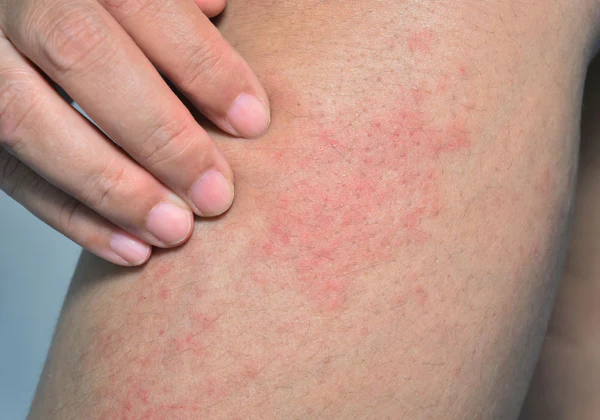⚠️ Medical Disclaimer
Important: This content is for informational and educational purposes only. It should not be used as a substitute for professional medical advice, diagnosis, or treatment. Always consult with a qualified healthcare provider before making changes to your diet, taking supplements, or if you have questions about a medical condition. Never disregard professional medical advice or delay seeking it because of information you read here.
Last Updated on January 25, 2024 by Grace Oluchi
Skin rashes are a common condition that can be caused by a variety of factors, including allergies, infections, and autoimmune disorders. Understanding the different types of skin rashes, their causes, symptoms, and treatments can help you manage and prevent them. In this article, we will answer the top 5 frequently asked questions about skin rashes.
Skin Rash.
A skin rash refers to any inflammation or discoloration that occurs on the skin and changes the skin’s normal appearance in addition to the color and texture.
NOTE: READERS MAY FIND THE PICTURES BELOW DISTURBING.
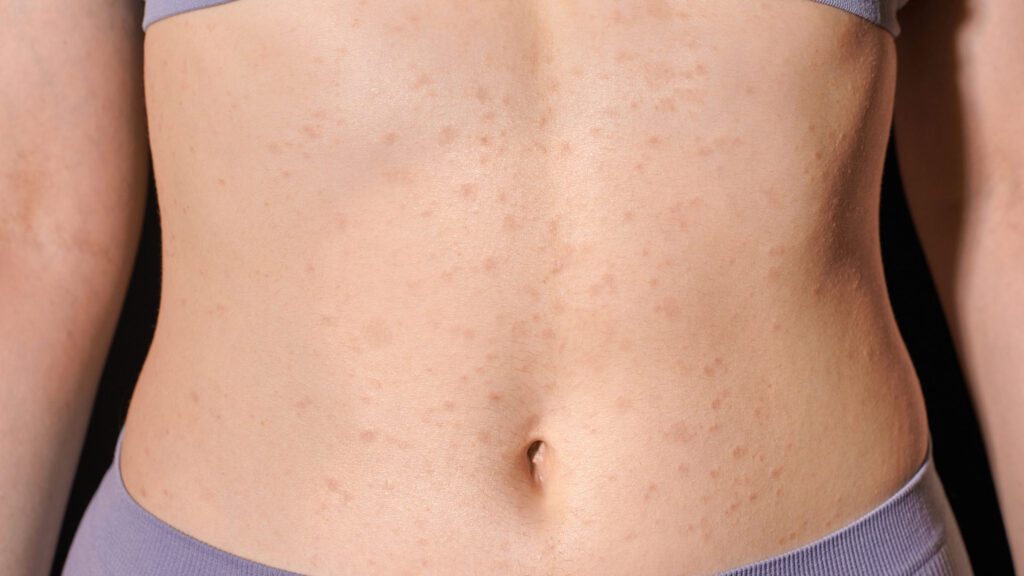

A skin rash can be red, inflamed, bumpy as well as dry, itchy or painful. Some rashes are caused by allergic reactions to the environment, food or medications, while others appear because of a skin disorder or underlying disease or infection. Bacteria, viruses, allergens and conditions including eczema, hives, and psoriasis can also be the source of skin rashes as well. A rash can also localize on a part of the skin as well as cover the whole skin.
How common are skin rashes?
Rashes affects millions of people across the world. Almost everyone develops at least one skin rash during their lifetime. It’s extremely common to sometimes feel itchy or have red, bumpy skin for a little while.
Types of Skin Rashes.
Skin rashes can occur because of a variety of factors including heat, infections, medications and environment stimulants. Here is a rundown of the most common types of skin rashes.
- 1.Contact dermatitis:
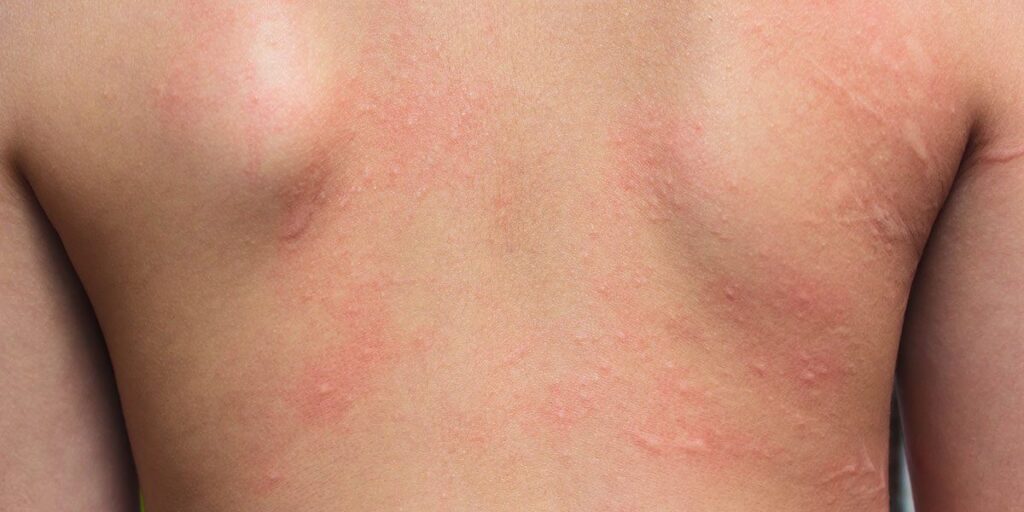

This form of dermatitis occurs when your body reacts to a substance that it doesn’t like. Lots of people are allergic to fragrances, preservatives, and poison ivy. Common irritants however, include soaps, detergents, chemicals and household cleaners.
- 2. Shingles:


Anyone who has ever had chickenpox is prone to getting shingles. After chickenpox clears, the shingles virus stays in the body. Also, if that virus is ever reactivated, the result is shingles. Unlike chickenpox where itching is common, pain is the common symptom with shingles. A shingles rash typically appears in groups of clear blisters and typically last 2 to 3 weeks. Shingles is most common in older adults.
3. Eczema:
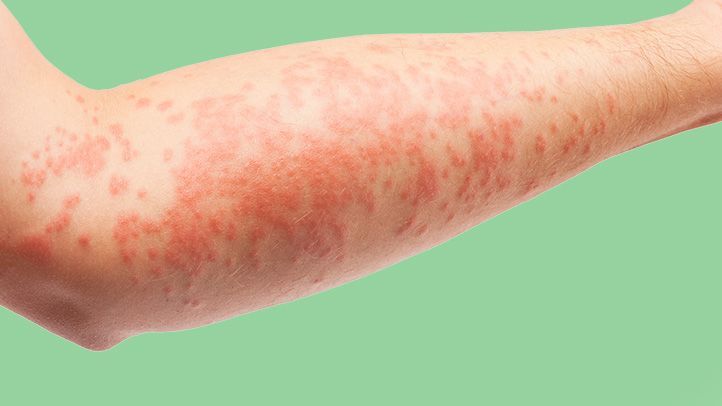

Also known as atopic dermatitis, is a common skin disease in children and often gets better as a child grows. It is rare for adults to develop atopic dermatitis. The American Academy of Dermatology, says 90% of people get atopic dermatitis before the age of 5. About 50% of people who get atopic dermatitis during childhood continue to have milder signs as an adult. It will show as dry and scaly patches, often located on the scalp, forehead and face. This type of rash is extremely itchy, but scratching can lead to skin infection. While treatment for atopic dermatitis cannot cure it, it can control it.
4. Hives:
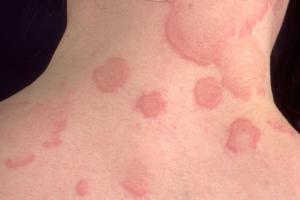

Also called urticaria, hives cause raised, red, itchy skin welts. You may get hives if you have an allergic reaction to airborne allergens or insect stings. Extreme temperature changes and certain bacterial infections , exposure to allergens such as antibiotics, pollen, pet dander, latex, bee stings and certain foods can cause hives. Most cases of hives go away after a few days.
5. Acne:


Acne affects all ages but is most prevalent in teenagers and young adults. Although acne often clears on its own, it sometimes needs over-the-counter topical treatments or prescription medications to control breakouts.
6. Psoriasis:
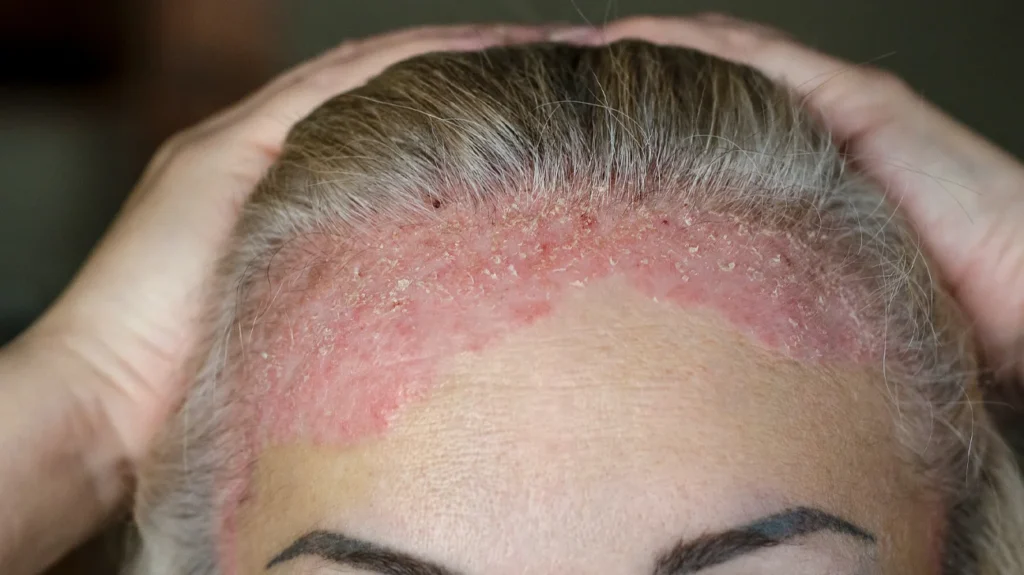

This lifelong skin disorder causes a thick, scaly rash. The rash often forms on the elbows, knees, lower back, scalp and genitals can also be infected. How the condition impacts the skin can vary, but it often manifests as a scaly, flaky, itchy rash that causes thick, raised patches of skin. These patches, called plaques, are light pink or deep red skin covered in a layer of dry, silvery skin called scales.
7. Heat rash:
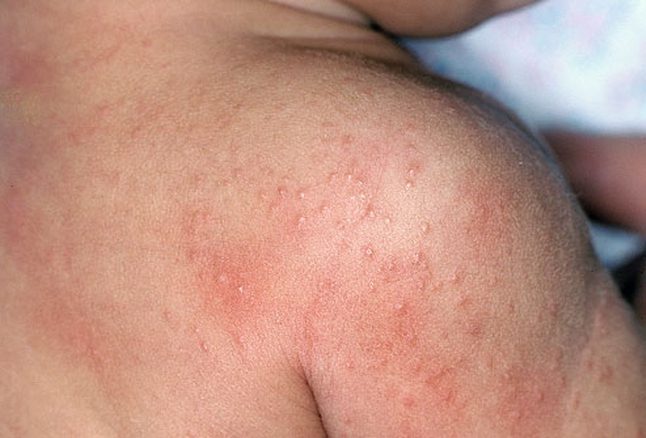

Also known as prickly heat, is a red, itchy rash made up of small prickly-feeling bumps that look like a cluster of pimples or blisters. It’s most common in children but can affect all ages.
What are the causes of a Skin Rash?
- Skin conditions like eczema and acne.
- Irritants.
- Allergens in the environment.
- Bacterial infections.
- Viruses.
What are the symptoms of a skin rash?
Skin rash symptoms vary depending on the type and also the cause. Symptoms of skin rashes symptom may include:
- Dryness.
- Pain.
- Burning or stinging sensation.
- Blisters.
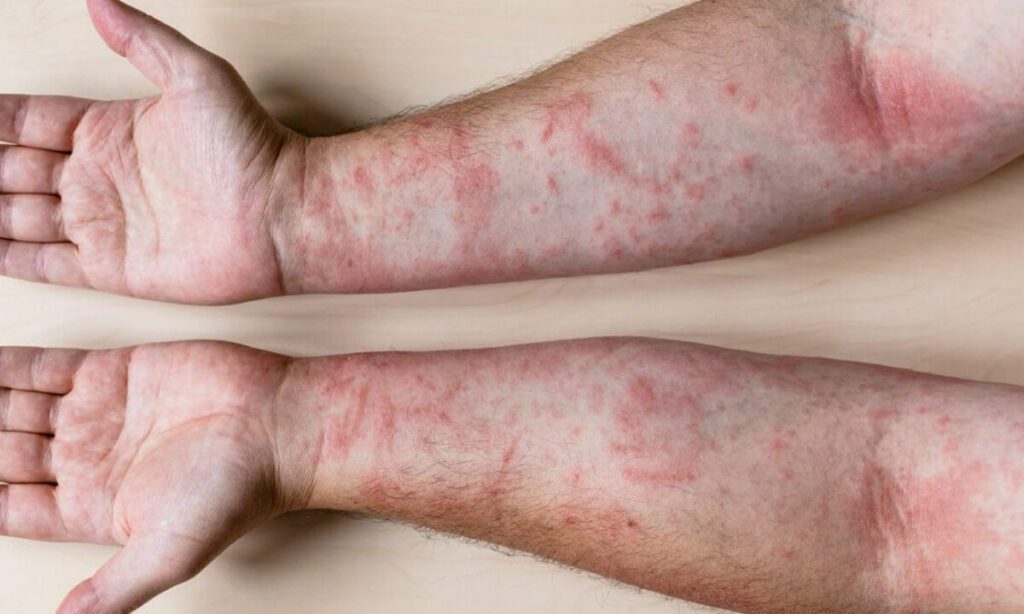

- Blotchy skin.
- Flaky or scaling.
- Itchy.
- Hive-like (welts).
- Red.
- Inflamed or swollen.
Treatments for Skin Rash.
- Immunosuppressants: If the skin rash is from eczema or an immune system response, medicines can reduce the reaction.
- Allergy medications: this may reduce itching.
- Steroids: Steroids ease inflammation and itchiness.
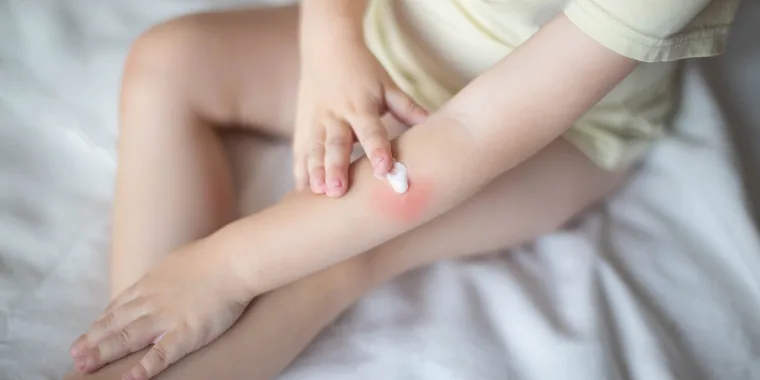

- Anti-inflammatory creams: Anti-inflammatory creams can soothe inflammation and itching.
- Oatmeal baths: Soaking in a warm bath with colloidal oatmeal can relieve dry, itchy skin rashes.
Home Remedies for Skin Rash.
Follow these guidelines to help ease discomfort and speed up the healing process at home:
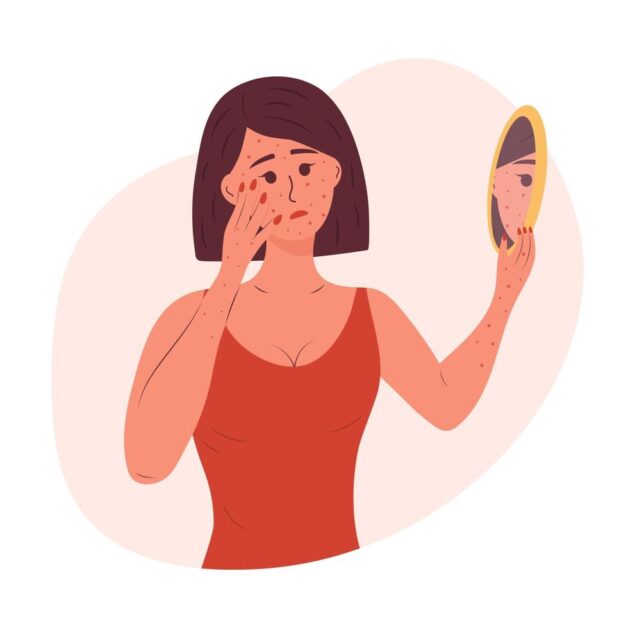

- Use mild, gentle cleansers instead of scented bar soaps.
- Use warm water instead of hot water for washing your skin and hair.
- Pat the rash dry instead of rubbing it.
- Let the rash breathe. If it’s possible, also avoid covering it with clothing.
- Stop using new cosmetics or lotions that may have triggered the rash.
- Apply unscented moisturizing lotion to areas affected by eczema.
- Avoid scratching the rash because doing so can make it worse and could lead to infection.
- Wash your hair and scalp regularly with medicated dandruff shampoo if you have dandruff along with a rash.
The Key Takeaway.
Some skin conditions, like psoriasis, are lifelong and will need more care. Your healthcare provider can identify the cause of the skin rash. Ask about how to minimize exposure to rash-causing triggers. Your provider can customize a treatment plan to address your specific symptoms and rash type.
Most rashes are not life-threatening, but some rashes can be a sign to something more serious. I recommend seeing your Dermatologist if the rash is rapidly spreading, begins to blister, is painful, dusky or looks infected. The sooner you receive proper diagnosis, the more successful your treatment plan will be. 😉
How much a skin rash affects your life depends solely on what’s causing it. It is quite difficult to avoid viruses and bacteria because they’re lingering around us but you can avoid allergens and irritants that you know or may bother you.
What are the different types of skin rashes?
Skin rashes can be categorized into several types, including contact dermatitis, atopic dermatitis, psoriasis, rosacea, and hives. Each type has unique symptoms and treatments.
What causes skin rashes?
Skin rashes can be caused by a variety of factors, including allergies, infections, medications, and autoimmune disorders. Determining the base cause of the rash is crucial for effective treatment.
What are the common symptoms of skin rashes?
Symptoms of skin rashes can include redness, itching, swelling, and blisters. The severity and period of the symptoms vary depending on the type and cause of the rash.
What are the treatment options for skin rashes?
Treatment options for skin rashes depend on the type and severity of the rash. Mild rashes can be treated with over-the-counter creams and ointments, while more severe rashes may require prescription medication or other medical interventions.
Can skin rashes be prevented?
Preventing skin rashes involves identifying and avoiding triggers, such as certain foods, environmental allergens, or irritants. Maintaining good personal hygiene and using gentle skincare products can also help prevent skin rashes.

